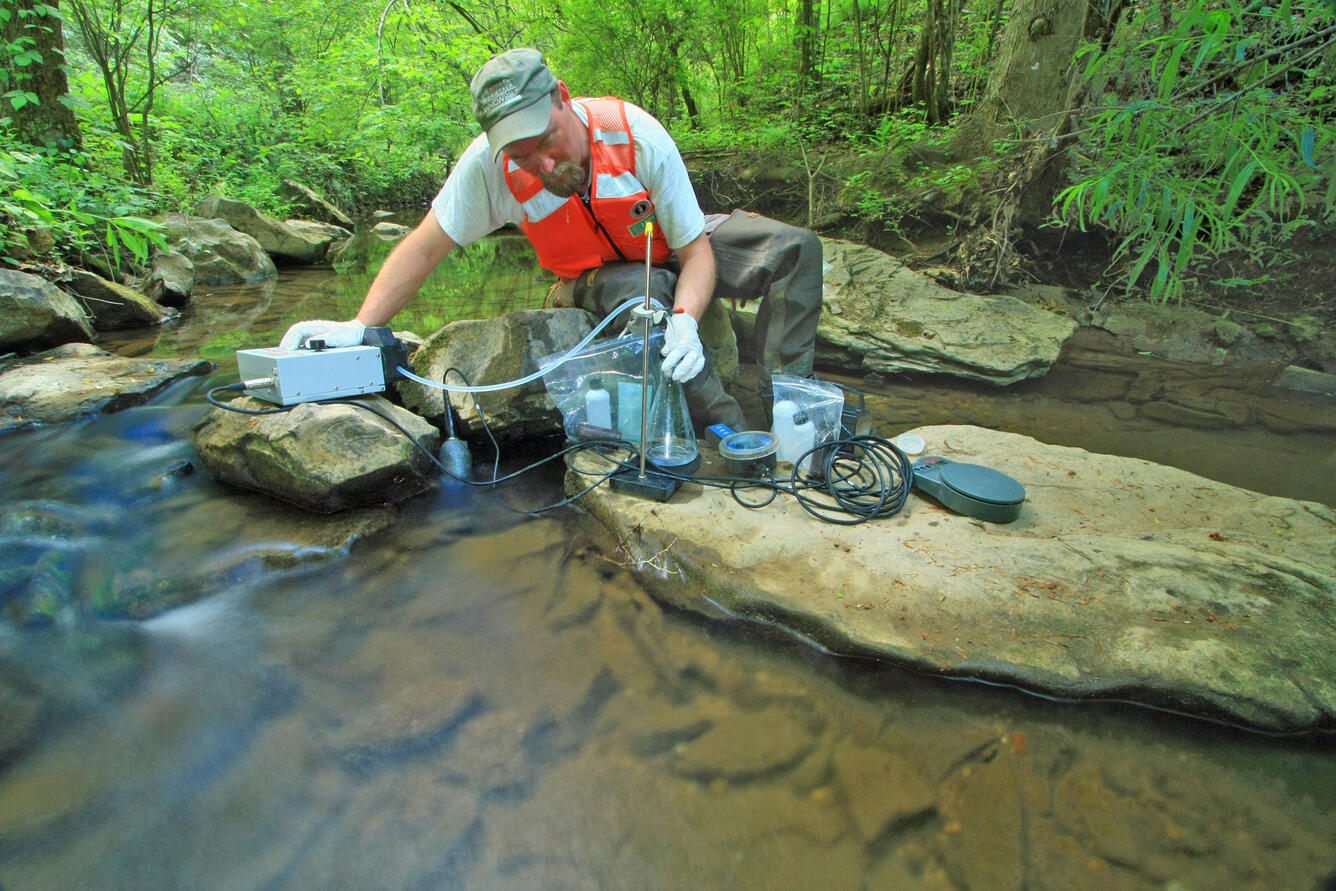Sampling for organism that causes disease in amphibians, Alabama.

Detailed Description
Sampling for batrachochytrium dendrobatidis (Bd), Little Ugly Creek, Cahaba National Wildlife Refuge, Bibb County, Alabama
Dan Calhoun, USGS, is sampling the stream for the organism that causes Chytrid disease in amphibians. This project is part of the USGS Amphibian Research and Monitoring Initiative.
The U.S. Geological Survey's (USGS) Amphibian Research and Monitoring Initiative (ARMI) began in 2000 with the goal of determining the status and trends of amphibian populations throughout the U.S. The program was designed to provide information useful in determining causes of declines or other changes in population distributions and is divided geographically into seven regions with herpetologists and hydrologists assigned to each region. The ARMI Southeastern Region consists of North and South Carolina, Tennessee, Alabama, Georgia, Florida, Puerto Rico, and the U.S. Virgin Islands. Personnel in the South Atlantic Water Science Center - Georgia are responsible for collecting and analyzing hydrologic and water-quality data associated with amphibian monitoring sites that are primarily located on Department of Interior lands including one national park and eight national wildlife refuges. The southeastern U.S. has the highest diversity and abundance of amphibians nationally, with over 140 known species and as many as one million amphibians per square kilometer.
Since 2000, water-quality data have been collected at selected amphibian sampling locations to support understanding of the occurrence and long-term changes in amphibian populations. Data were collected in vernal pools, streams, springs, and subterranean pools and streams. Field parameters included field measurements of water temperature, dissolved oxygen, pH, specific conductance, and turbidity and laboratory analyses of major ions, nutrients, and metals. Most sites were sampled for organic carbon and a few sites were sampled for pesticides. Since 2007, many sites have been sampled for the chytridiomycosis causing fungus Batrachochytrium dendrobatidis (Bd), a pathogen that can cause high mortality in amphibians and has been identified as a major cause of amphibian declines worldwide.
This photograph is from an album on Flickr.com about Chytrid Sampling.
Sources/Usage
Flickr license - getting exact text from Alan Cressler.
U.S.G.S. Chytrid Sampling, Cabaha National Wildlife Refute, Alabama, April 2009

